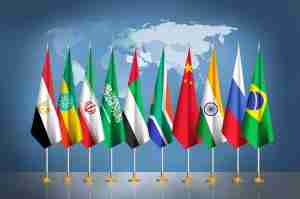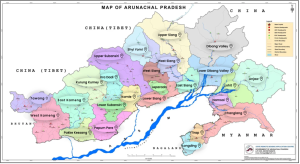Introduction
Since the 2008 global financial crisis, many advanced democracies have witnessed the rapid rise of right-wing populist movements. Once-stable political party systems have begun to unravel, voter alignments have shifted, and populist parties or leaders have gained unprecedented support.
This surge has reshaped patterns of political participation and disrupted traditional forms of political representation. The Tea Party in the United States, the Alternative für Deutschland (AfD aka Alternative for Germany), in Germany, and the National Rally in France exemplify how right-wing populism has emerged not as an outlier, but as a central force in contemporary politics.
This article explores the causes and consequences of this resurgence through theoretical lenses. It then assesses how this political transformation has redefined political participation—through grassroots mobilisation, protest, and digital activism—and concludes by examining its implications for liberal democracy.
Theoretical Explanations for the Right-Wing Resurgence
Cultural Backlash and Post-Materialism
One of the most compelling explanations for the rise of the populist right is rooted in value-based conflicts. Ronald Inglehart’s theory of post-materialism argued that with the rise of affluence in post-war societies, people began to prioritise values like autonomy, tolerance, environmentalism, and self-expression over material concerns.
However, not all sections of society embraced these values. Older, rural, and less-educated populations often remained attached to traditional norms—hierarchy, national identity, family values—and viewed cultural liberalisation with suspicion.
Pippa Norris and Inglehart have conceptualised this backlash as a cultural reaction: the “once-dominant majority” segments feel culturally marginalised by multiculturalism, LGBTQ rights, gender equality, and globalism. This perceived loss of status fuels support for populist leaders who claim to defend national identity and traditional values. In effect, the old economic left–right cleavage is being replaced by a cultural authoritarian–libertarian one.
Economic Grievances and Relative Deprivation
Beyond culture, economic dislocation and perceived inequality have been central to the right-wing populist surge. While absolute poverty in advanced economies may not be widespread, many feel relatively worse off due to stagnant wages, insecure jobs, and regional disparities.
Ted Gurr’s theory of relative deprivation helps explain this: when expectations rise but outcomes stagnate, frustration can become politically explosive.
Post-2008 austerity policies, coupled with job losses in manufacturing and rural decline, fostered resentment toward both domestic elites and foreign competition. Globalisation, outsourcing, and immigration are often framed as threats to national prosperity.
Right-wing populists tap into these grievances by promising economic protectionism, privileging native workers, and demonising outsiders.
Globalisation Cleavages: Winners vs. Losers
Cleavage theory, initially developed by Lipset and Rokkan, explained party systems based on enduring social divides—class, religion, centre–periphery, etc. But in recent decades, these traditional cleavages have eroded.
A new divide has emerged: globalisation’s winners vs. losers. Those benefiting from the knowledge economy, international networks, and urban cosmopolitanism are at odds with those suffering from industrial decline, automation, and demographic change.
Populist right parties have successfully constructed narratives of “betrayal” by urban elites who embrace supranational institutions (like the EU) and multiculturalism. By positioning themselves as defenders of sovereignty and ordinary citizens, parties like UK Independence Party (UKIP), France’s National Rally, or the Danish People’s Party channel resentment against both global capitalism and progressive politics.
Institutional Failure and the Crisis of Representation
Over time, many mainstream parties—especially centre-left and centre-right—moved toward the political centre, adopting similar policies on economics, governance, and international relations. This depoliticised key issues and led to what Katz and Mair term the “cartelisation” of party politics: parties became state-subsidised entities, less connected to grassroots members and more integrated into elite networks.
Populists portray themselves as the antidote to this elite consensus.
The 2008 crisis magnified these failures—governments bailed out banks while cutting social spending, reinforcing the view that elites were corrupt and out of touch.
Populists step into this vacuum, presenting politics as a moral battle between “the people” and “the elite”. Their conception of representation is plebiscitary—leaders embody the general will directly, unmediated by traditional institutions.
Means of People Participation
Grassroots Mobilisation
The resurgence of right-wing politics has been marked by vigorous grassroots mobilization, often outside traditional party structures. The Tea Party movement in the US (2009–2011) rallied against government spending and taxation, galvanising previously inactive conservative voters and reshaping the Republican Party.
In Germany, PEGIDA (Patriotic Europeans Against the Islamisation of the West) mobilised thousands against refugee policies, while France’s National Rally fed on widespread protests like the Yellow Vests to amplify discontent.
Unlike traditional parties, populist movements mix protest culture with electoral mobilisation. Rallies, petitions, and direct action events are used not only to pressurise governments but also to sustain in-group identities and political momentum.
Protest Politics and Street Activism
Traditionally associated with the left, street protests have become central to right-wing populist strategy. The PEGIDA marches in Germany, anti-immigrant demonstrations in Sweden and the Netherlands, and the farmer-led highway blockades in the Netherlands are examples of how right-wing movements adopt extra-parliamentary tactics to express dissatisfaction.
In the US, the culmination of protest politics was the January 6, 2021, Capitol riot. After Donald Trump’s electoral defeat, thousands of his fervent supporters – convinced by populist narratives of a “stolen election” – stormed the U.S. Capitol in an unprecedented attempt to overturn the result. The event showed showed how a populist movement can morph from peaceful rallying into direct attacks on democratic institutions when fuelled by conspiracy and grievance.
Digital Engagement and Online Networks
Digital media has revolutionised political participation. Populist leaders and parties have exploited platforms like Twitter (X), Facebook, and YouTube to bypass traditional media. Now leaders can communicate directly with supporters, and dominate narratives.
A prime example is Donald Trump’s use of Twitter: he sent approximately 57,000 tweets over nearly 12 years, with roughly 8,000 during his 2016 campaign and over 25,000 while in office.
These platforms favour sensational, emotionally charged content, often blurring facts and fostering echo chambers. Although digital participation democratises access, it also facilitates the spread of misinformation, polarisation, and radicalisation— creating challenges for fair deliberation.
Online “keyboard warriors” translate into offline action as well. Social media engagement isn’t merely slacktivism– it often correlates with conventional activism by the same individuals. The digital sphere has thus become a crucial incubator for right-wing populist communities, allowing them to network, reinforce their narratives, and coordinate activities without needing large formal party bureaucracies.
Additionally, digital engagement has lowered barriers to political participation. It has enabled individuals who might never join a party meeting or attend a rally – to engage politically by sharing content, donating small amounts online, or debating issues on social networks.
For better or worse, the online sphere is the new arena of populist participation, democratizing political communication even as it sometimes “hijacks” civic debate.
Changing Party System in West
Party System Fragmentation
The post-2008 surge of right-wing populism has profoundly altered party systems in many advanced democracies. Long-standing patterns of two-party or two-bloc competition have been disrupted, leading to greater fragmentation and the entry of new political players.
In Europe, the collapse of established parties has been striking. In France, in the 2017 presidential election, neither of the two parties that had alternated in power for decades (the Socialists and the Gaullist Republicans) even made it to the run-off. Italy’s traditional parties have also collapsed, replaced by movements like Five Star and the Brothers of Italy. In Germany, the AfD broke post-war taboos by entering parliament in 2017.
This fragmentation means that parliaments are more diverse, but coalition-building has become complex. In proportional systems, populist parties may act even as kingmakers or disruptors; in majoritarian systems like the US or UK, populists have captured traditional parties from within.
Elite–Mass Linkages in Populist Politics
Traditional modes of political representation relied on stable linkages between elites (political parties, elected representatives) and social groups (class, religious, regional bases, etc.). These linkages have been profoundly altered by populist politics.
The intermediary institutions like labour unions, mainstream media etc. all played a lesser role in linking citizens to government during the populist surge. Populist movements, instead, utilized rallies, referendums, social media polls, and other direct appeals to create a sense of unmediated connection.
For example, the Five Star Movement’s Rousseau platform allowed online voting on parliamentary decisions. Trump tweeted policy positions directly to his followers, bypassing Congress or party platforms.
However, this style often weakens accountability and fosters personality cults. When representation depends on charisma rather than institutions, political loyalty may hinge on leader popularity rather than programmatic policy. A danger, captured in the concept of ‘hero worship’ as suggested by Ambedkar.
Country Cases
United States
In the United States, the right-wing populist upsurge began in the aftermath of the 2008 crisis and reached a climax with the election of Donald Trump in 2016. The Tea Party movement (2009–2010) rallied conservative citizens against bailouts, deficits, and Obama’s policies, staging protests in hundreds of cities and injecting populist energy into the Republican Party (aka GOP – Grand Old Party).
Trump drew on nationalism, anti-immigration sentiment, and anti-elite rhetoric. His presidency was marked by attacks on the press, judiciary, and electoral system. Though he energised alienated voters, he also undermined democratic norms, culminating in the Capitol attack of 2021.
France
France has been a bellwether of right-wing populist strength in Europe. After 2008, France experienced economic stagnation, rising unemployment (especially among youth), and social tensions over immigration and Islamist terrorism .
Le Pen succeeded her father Jean-Marie Le Pen in 2011 and rebranded the National Front to appeal to broader voters, focusing on immigration, Islam, and EU scepticism. The 2017 and 2022 presidential elections saw her reach the runoff stage, signalling deep cultural divides.
The Yellow Vest protests in France also reflect broader discontent with liberal elites, taxes, and centralisation.
Germany
In Germany, post-war politics long resisted any far-right party in Parliament, due in part to historical memory. That changed after the Eurozone and migrant crises, when AfD rose to prominence. Founded in 2013 initially as an anti-Euro party, the AfD quickly shifted focus to immigration and Islam after Germany admitted a large wave of refugees in 2015.
In 2025 Federal elections, AfD secured around 21% of total votes, emerging as second largest party. A massive growth from securing 10% of total votes in the previous 2021 elections.
Movements like PEGIDA is also notable mention which has helped anchor far-right issues in the public sphere, despite strong civil society pushback.
Implications for Liberal Democracy
The resurgence of right-wing populism since 2008 has had profound implications for liberal-democratic values. It raises pressing questions about the future of representative democracy in advanced states.
On one hand, populism has injected new energy into democracy – engaging citizens who were estranged from politics, broadening representation to include neglected viewpoints, and reasserting the principle that government should be accountable to the popular will.
On the other hand, the populist style of politics often conflicts with liberal norms of pluralism, minority rights, and institutional checks and balances. Populist nationalism often defines “the people” in exclusionary terms. Muslims, migrants, LGBTQ+ individuals, and other minorities are frequently portrayed as threats to national identity.
This duality creates a paradox: populist movements increase the responsiveness of democratic systems to public concerns, yet in doing so they may undermine the liberal safeguards that prevent tyranny of the majority and protect constitutionalism.
This points to another key implication: erosion of rule-of-law and institutional checks.
Populist leaders in power often chafe against independent institutions – courts, central banks, civil services, media – portraying them as obstacles imposed by elites to thwart the people’s will. The future of representative democracy thus hinges on whether institutional norms can be maintained when populist forces achieve power.
Another implication is the quality of democratic discourse and deliberation. Populism’s penchant for simplistic, emotive rhetoric and misinformation can degrade the public sphere. This inhibits reasoned debate and fuels polarisation. Social media has exacerbated this shift toward post-truth politics, where feelings and loyalty often matter more than facts and deliberation.
Despite risks, the populist wave reveals real failings: technocracy, inequality, unaccountable elites. It has re-energised voter engagement and expanded the scope of debate. Mainstream institutions can use this moment to innovate—via decentralisation, transparency, participatory tools, and renewed ideological clarity.
In fact, one should consider that populism’s rise could be cyclical. It was, in part, a response to the failures of the preceding era (inequality, corruption, cultural alienation). If governments manage to address those issues – say, by reducing inequality or controlling immigration – the appeal of extreme solutions might wane. The voters may eventually tire of anti-establishment anger if it doesn’t deliver results and may seek more pragmatic leadership.
Conclusion
The post-2008 resurgence of right-wing populism has been a stress test for liberal democracies. Moving forward, preserving the liberal democratic order will require addressing the root grievances that populists exploit, without compromising core values of democracy.
This trajectory also reveals that even the most mature democracies in the West are far from being “perfect”. Even in the heartlands of liberal democracy, the struggle to balance popular will with institutional limits, persists, and the efforts to make institutions genuinely responsive, continues.














Overall, good article. However, 1 or 2 lines can be added on refugee crisis in Europe and USA, for e.g. demographic changes leading to perception of liberal leaders doing vote bank politics and ignoring crime surge by illegal immigrants (grooming gangs in UK), BREXIT issue, Knife attacks in Europe, etc.
Very well articulated. Please continue this series.